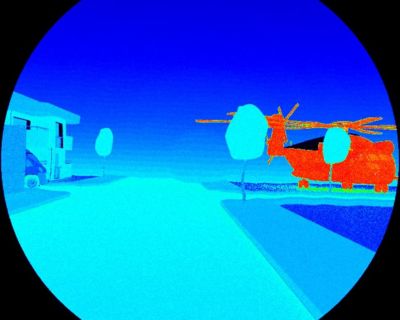-
-
Access Free Student Software
Ansys empowers the next generation of engineers
Students get free access to world-class simulation software.
-
Connect with Ansys Now!
Design your future
Connect with Ansys to explore how simulation can power your next breakthrough.
Countries & Regions
Free Trials
Products & Services
Learn
About
Back
Products & Services
Back
Learn
Ansys empowers the next generation of engineers
Students get free access to world-class simulation software.
Back
About
Design your future
Connect with Ansys to explore how simulation can power your next breakthrough.
Free Trials
ANSYS BLOG
January 12, 2023
Get an Overview of Electro-Optic Infrared Systems
Electro-optic infrared (EO/IR) systems are a type of sensor technology that uses a combination of optics and electronics to detect, track, and identify objects or targets in the infrared spectrum. EO/IR systems can be used for a variety of purposes, including target acquisition, tracking, and identification.
EO/IR systems operate in a variety of weather conditions and environments, including fog, rain, and smoke. This is because they rely on the detection of IR radiation, which is emitted by all objects with a temperature above absolute zero. IR radiation is invisible to the human eye but can be detected by specialized sensors called IR detectors. A main advantage of EO/IR systems is their ability to operate in low light or total darkness, making them ideal for use in a variety of situations where traditional optical sensors may not be effective. They are also highly accurate and can provide real-time data and images, making them a valuable tool for a wide range of applications.

EO/IR systems typically consist of three main components:
- IR detector: responsible for detecting the IR radiation emitted by a target and converting it into an electrical signal
- Focusing lens: used to focus the IR radiation onto the IR detector
- Display or imaging device: used to display the resulting image or data
Electro-Optic Infrared System Design Challenges
There are several challenges that must be considered when designing EO/IR systems:
- Performance optimization: EO/IR systems must perform effectively in different weather conditions, at different times of day, and in different environments.
- Size, weight, and power (SWaP) constraints: EO/IR systems are often used in applications where size, weight, and power are critical factors, such as on military aircraft or satellite platforms.
- Cost: EO/IR systems can be expensive to develop and produce, so it is important to consider cost when designing these systems.
- Complexity: EO/IR systems are complex, with many different components and subsystems that must be integrated and tested.
- Manufacturing: EO/IR systems often require specialized manufacturing processes and techniques, which can be challenging to implement and control.
These challenges must be carefully considered and addressed during the design process to ensure that the resulting system is reliable, effective, and cost effective.
The Ansys EO/IR Solution
To address these challenges, Ansys Lumerical, Ansys Zemax OpticStudio, Ansys Speos, Ansys AVxcelerate Sensors, and Ansys Systems Tool Kit (STK) provide a range of features and capabilities that enable designers to enhance the performance of EO/IR systems under different conditions and environments. These software tools provide accurate simulations and analysis of photonics and opto-electronic systems, satellite and aircraft systems, and optical systems, which enable designers to predict the performance of EO/IR systems in different environments and optimize their design for specific applications.
- Speos enables designers to analyze the performance of EO/IR systems under different weather conditions, such as fog, rain, and smoke, and to optimize the design of the system for specific applications.
- STK enables designers to analyze the performance of EO/IR systems on satellite and aircraft platforms and to optimize the design of the system for these applications.
- OpticStudio enables designers to optimize the design of EO/IR systems by analyzing the performance of optical components and predicting the behavior of the system in different environments.